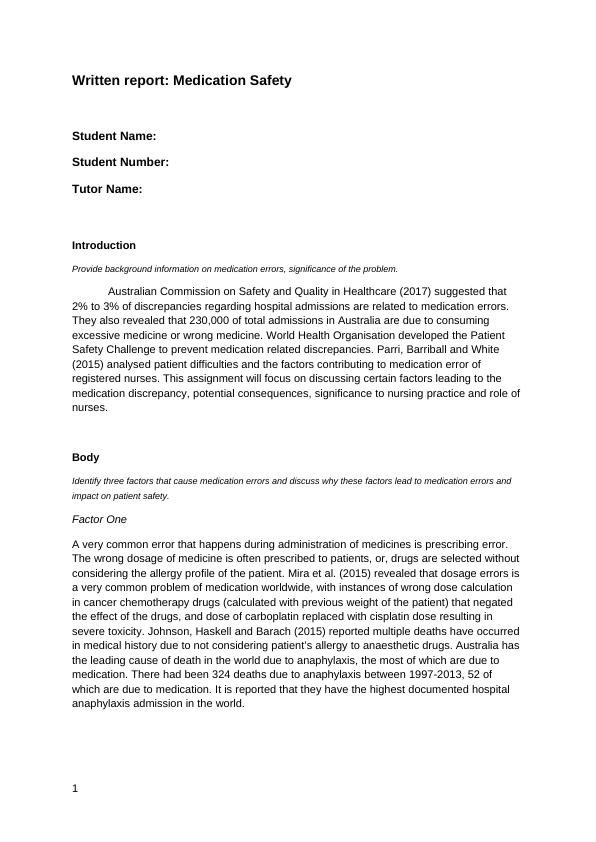Medication Safety: Factors, Consequences, and Strategies for Prevention
Write a report on medication errors, identifying three major reasons why they occur and explaining their impact on patient safety. Support your explanation with evidence from the literature and conclude with how this information will inform your practice on your next clinical placement.
5 Pages2132 Words185 Views
Added on 2022-10-10
About This Document
This report discusses medication errors, their significance, and the Patient Safety Challenge by the World Health Organisation. It identifies three factors leading to medication discrepancies, potential consequences, significance to nursing practice, and role of nurses. The report also suggests three strategies that registered nurses can use to prevent medication errors.
Medication Safety: Factors, Consequences, and Strategies for Prevention
Write a report on medication errors, identifying three major reasons why they occur and explaining their impact on patient safety. Support your explanation with evidence from the literature and conclude with how this information will inform your practice on your next clinical placement.
Added on 2022-10-10
ShareRelated Documents
End of preview
Want to access all the pages? Upload your documents or become a member.
NURS2006 Supplementary Assessment
|12
|5338
|55
5 MEDICATION ERRORS MEDICATION ERRORS MEDICATION ERRORS Name Institutional affiliation
|5
|1789
|361
Implementing Evidence Based Practice in Adult Nursing PDF
|45
|4126
|59
Maths Assignment
|5
|861
|202
Medication Errors | Report
|18
|4206
|9
Main Causes and Practices to Minimize Medication Errors
|27
|7406
|466


